First Trip to Campania, Part 1 – The Greeks
Campania has a long history that stretches back to the Greeks and the local tribes who occupied the Southern Italian peninsula.
I am writing this on board the Frecciarossa – The high speed train from Naples to Rome which covers the distance of a three plus hour drive in little over an hour. You do feel as if the train is going to take off and fly.
This trip made very clear that if I am to understand the food culture of Campania and its architecture I am going to have to really dig into the history of Magnia Grecia – The period in which Southern Italy was actually a series of Greek city states that were colonies of Greece and ultimately came to rival Greece before being subsumed by the Romans.
This is perhaps too much to sum up in a blog post and I don’t yet know enough so I will just start with experiences. On Saturday we had a wonderful guide in Pompeii who is studying archaeology in Naples. In the course of our tours of food sites in Pompeii we talked of Neopolitan culture. She was very clear that at its root Pompeii is a Greek city and that, while it bears the layers of Rome, the Spanish, and the French, it is the Greek culture that lies at its heart.
We talked about the cuisine and she observed it is really the gift of viticulture and olive oil production that is the great influence of Greek culture - and of course flour.
After our visit to Pompeii we went to the winery Feudi di San Gregorio and we had a similar conversation about wine culture – one of their most famous wines is Greco di Tufo – embodying both the Greeks and the soil in its name.
The following day we were touring the open air food market of Naples with a guide who was from Syracuse in Sicily and we continued the discussion of the importance of Greek heritage in the history of Campania. This became another data point in my research that this history is crucial to understand. That afternoon we went to the archaeological museum in Naples. A large portion of the second floor devoted to Magnia Grecia has been recently installed.
This from the introductory test panel:
No archaeological acquisitions are so profoundly entwined with Italian and European cultural history as the relics of Magna Graecia in MANN: from the return to the classical in the eighteenth century to the most recent questions of the roots of Europe and cultural integration in the age of globalization.
The symbiotic beginning of this history is 1732, the year of the discovery of the Heraclean Tablets, which paved the way for the rediscovery of Magna Grecia as an intellectual and civil legacy. The inscription was donated to Charles III in 1748, but the bulk of the bourbon collection was formed in the early nineteenth century with the purchase of the most famous collections of the kingdom (Vivenzio, Ficco and Cervone, Gargiulo). The policy was to control the most flourishing antiquities market in Europe, fueled by the often illegal excavations scattered across the Kingdom of the Two Sicilies. A dispersal of the archaeological heritage of the South that fostered the Europeans taste for antiquarian culture and the love of the antique.
With the unification of Italy, the acquisition of the last of the major Neapolitan collections (Santangelo, Syracuse) was followed by a new season of scientific research, which saw the acquisition of materials from the excavations of Luigi Viola in Taranto (1879-1883) and Palo Orsi in Locri (1189-1890). These were the years when the southern question arose, and archaeological research became a possible means of redemption for the south.
During the twentieth century, with the gradual administrative reorganization of national conservation of the heritage, acquisitions narrowed to the Neopolitan area. Thanks to Pithacusae and Cumae, this played a leading role in the study of Greek colonization. A new project of valorization bound up with the work of cultural promotion carried out by Giovanni Pugliese Carratelli and the idea of Magnia Graecia and the polis as a matrix of European civilization.
As the heir to this history, the new exhibition brings together the towns of Magna Graecia with the indigenous remains of ancient Italy and the emergence of Rome, placing the collections of Magna Graecia at the center of a history of migration, integrations and relationships that continues to speak to us in the present.
In a panel on Southern Italy and Rome:
There are not many historical concepts that resist changes in scientific fashions and theoretical models. One of these rare exceptions is the concept of Romanization, which has long been used to define the great transformations that affected Magna Graecia, the Italic peoples and the Mediterranean between the third and first centuries BC with the arrival of the Romans.
This is a very complex phenomenon entwined with the rise of indigenous peoples and the spread of Hellenism; a complex aptly summed up in Wallace-Hadrill’s well know formula “ to be a Roman, go Greek.”
This notion of the multilayered quality of a culture is clearly the direction of a more self conscious historiography that is being presented in the galleries dedicated to Magnia Grecia. The objects are interpreted as such and the story, lives, and careers of the archaeologists and the collectors that are behind the collection are told as well.
It is interesting to me that in the introduction panel that shows the historic installations of the collection each of the two views feature images of the monumental Apulian Mask Kraters – and this new installation uses these monumental kraters as sign posts as well.
One of these shows what seems to be Hera offering Zeus a plate of food. I need to learn what is on that plate. Zeus is drinking wine.
These vases are from Canosa in Puglia.
Among the grapes that have grown there is Greco. Greco di Tufo has its “home” in a DOCG of the Campania wine region. The Greco Bianco is believed to have been introduced to Campania by the Pelasgians, an ancient population from Thessaly in Greece. The name Tufo refers not only to one of the villages from which the wine comes, but also the type of rock on which the village was built. Known as Tuff in English but distinct from limestone, tufa – it is made of ash ejected during an eruption which then compacts (Source).
So perhaps the artist envisions Zeus drinking Greco.
Greco di Tufo is prized to this day and is a direct gift of Greece to Campania – now having taken on its terroir as part of its identity.

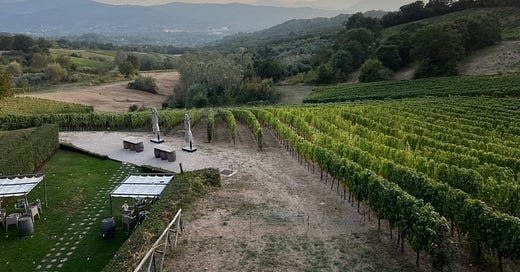




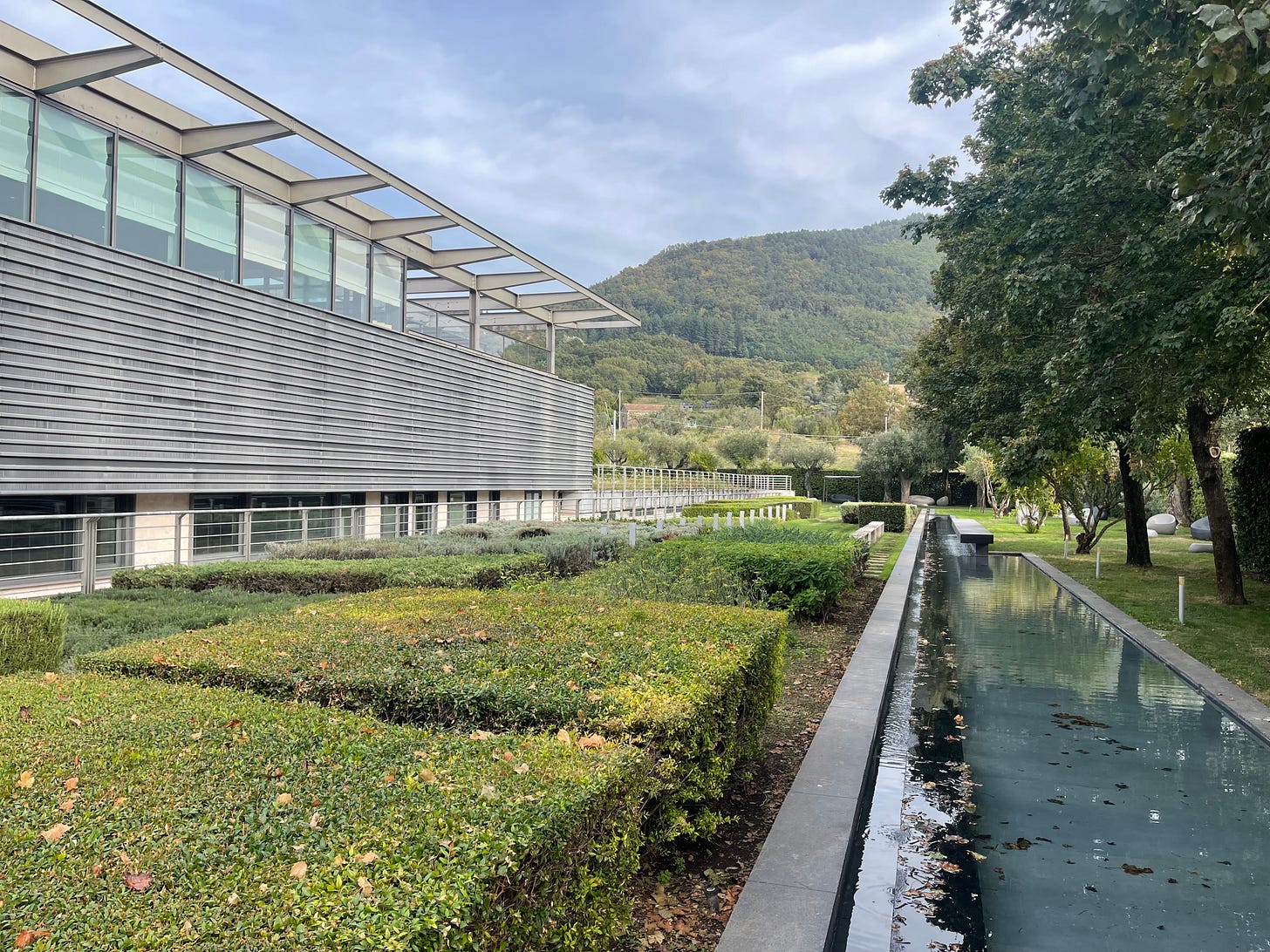

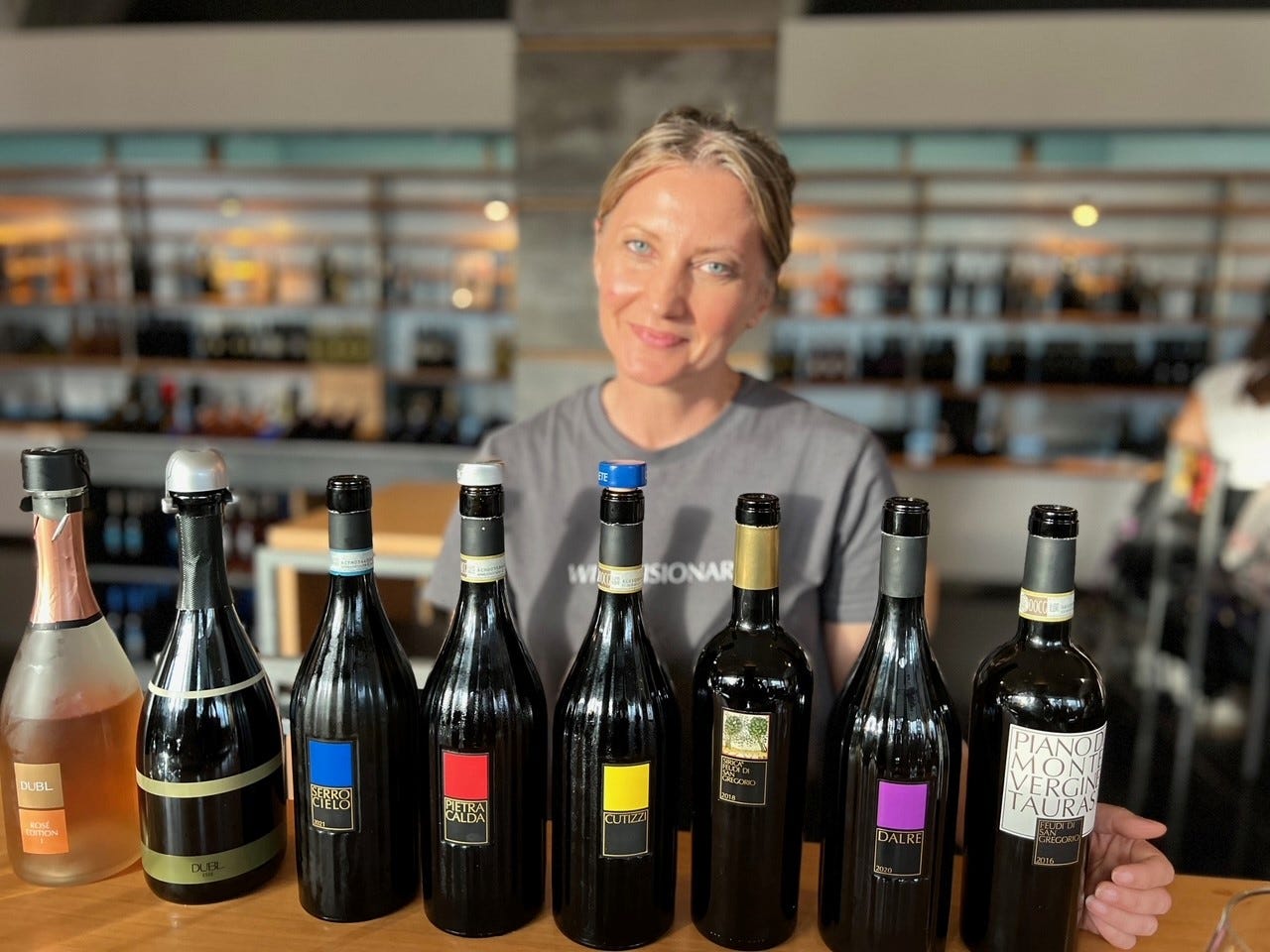
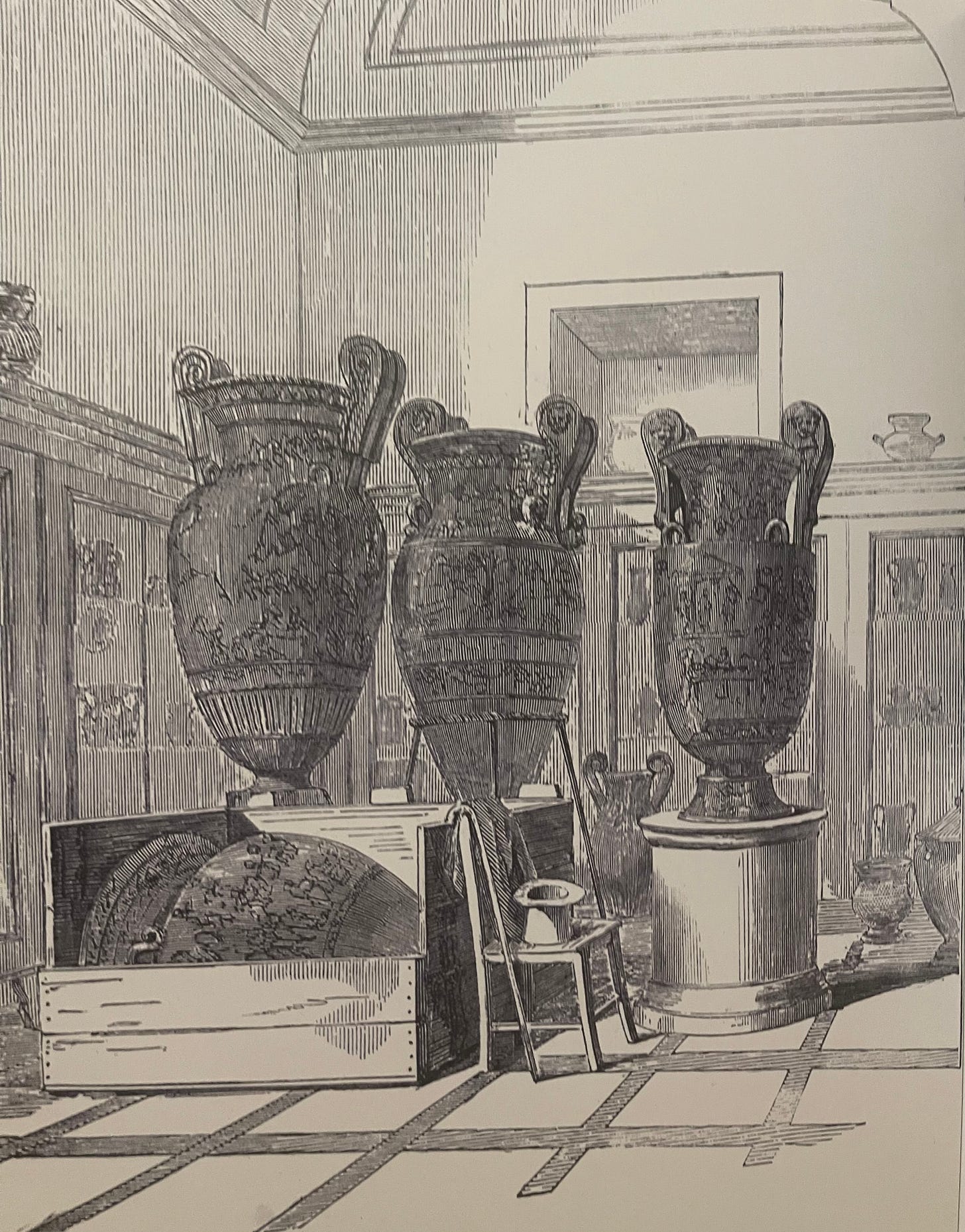

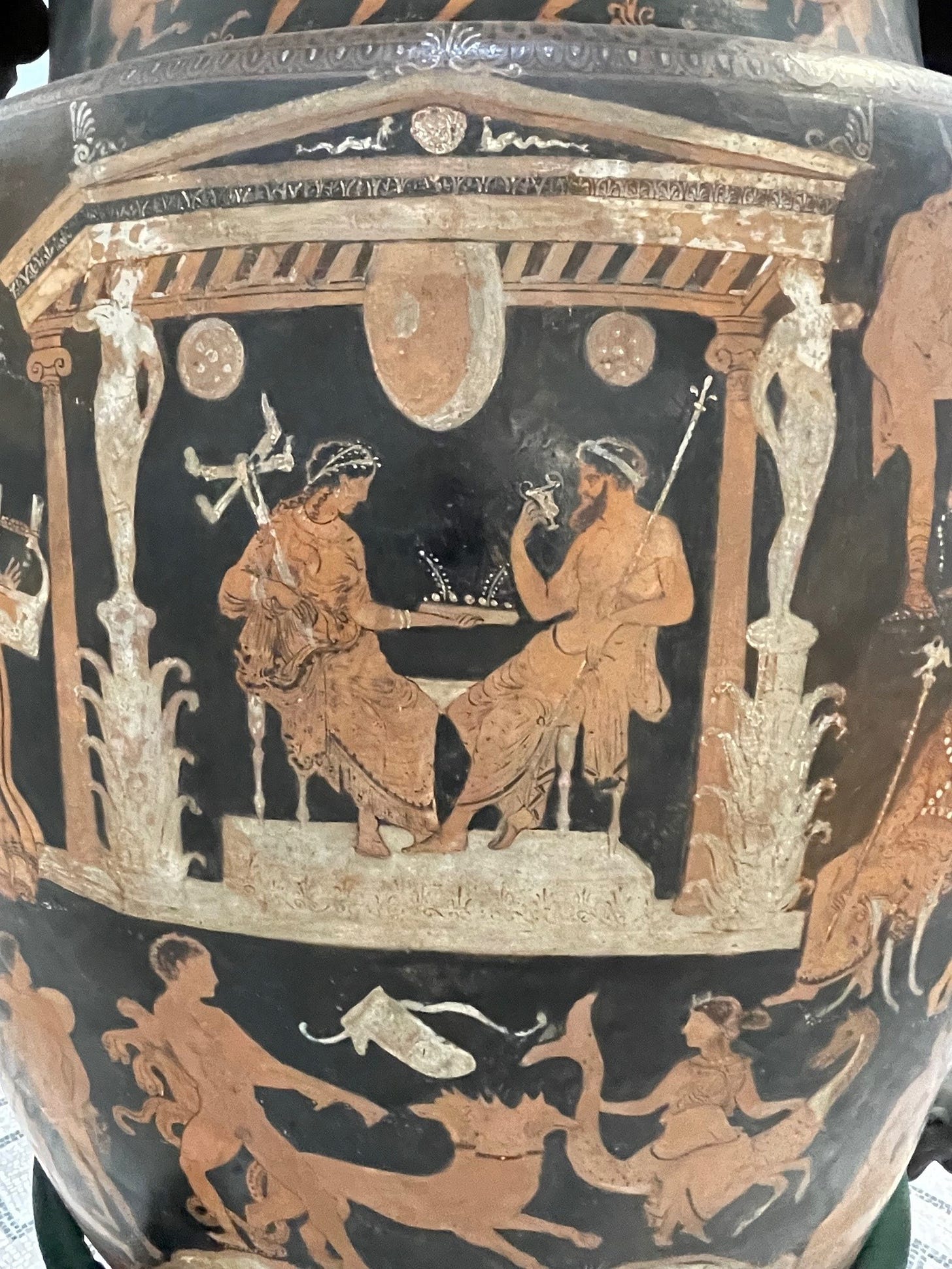
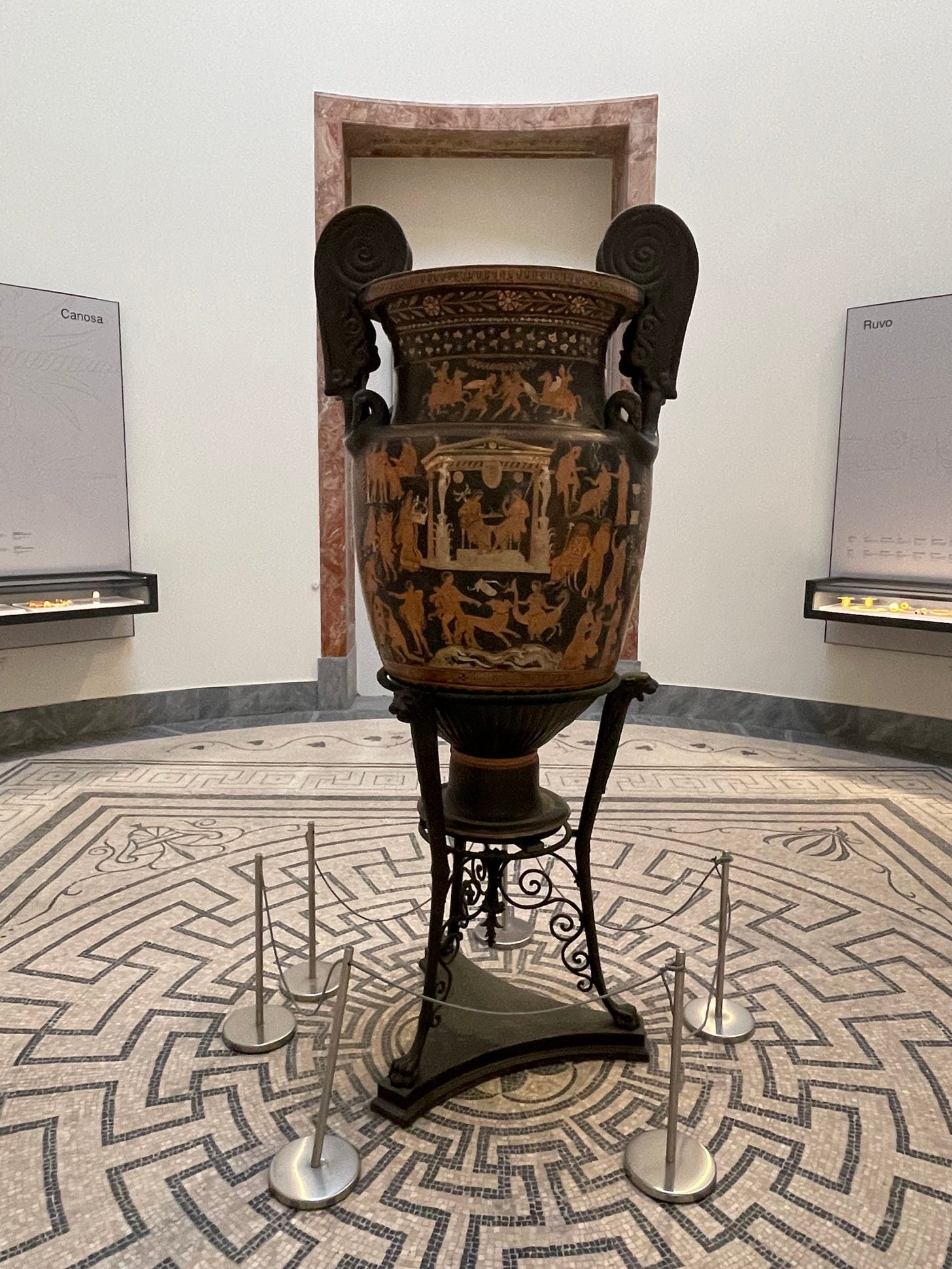
Great writing, Hans.